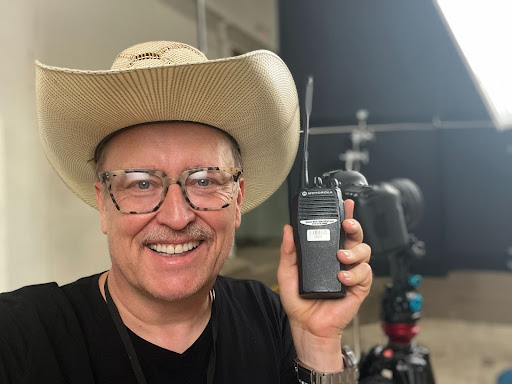From the mountains in Mongolia to the rough waters off the coast of Dubrovnick, Rick Sander has filmed in some of the toughest locations imaginable. “I work in a lot of harsh conditions and I’m always working outside,” Sander said. For the last two decades, Rick Sander has worked as Production Visual Effects (VFX) Supervisor on over 20 movies and T.V. shows all around the world. From Titanic to Spider-Man 2 to Tom Clancy’s Jack Ryan, he has filmed in five continents, countless different countries and all four seasons – meaning all possible weather conditions. Yet, there is one thing that stays constant, no matter the location, the weather or the film; that is a Motorola Solutions two-way radio (walkie-talkie). “Even in the mountains of Mongolia, we had about 200 Motorolas,” Sander said as he shared his experiences on different movie sets.
Why are two-way radios so essential to film production?
The answer lies within safety communications. With the potential for complex stunts and dangerous scenes, such as car crashes and explosions, the instant, clear transmission of messages over walkie-talkies can mean the difference between a safe set and an avoidable accident. They allow for immediate alerts in case of emergencies, coordination of safety protocols, and quick responses to any arising issues. In this fast-paced industry two-way radios are not just a convenience; they are a vital component of maintaining a secure and efficient production environment.
How did Motorola radios earn their place as the go-to radio on film sets?
When Sander shows up to a film set, he and his colleagues expect to see Motorola walkie talkies. “It’s always Motorola…there’s never any other system,” he said. The only difference between the various films that Sander has worked on is the type of Motorola radio they have. As the head of the visual effects department on many of the films, Sander prefers the slim MOTOTRBO™ SL300s, but has worked with countless other MOTOTRBO models and Motorola technology over the course of the last 20 years. But why have the Motorola radios become the standard for communication on a film set?
Durability
The durability of the Motorola radios is probably the most important aspect for this industry. “What other piece of equipment could someone, from a two or three-story building, throw to someone on the ground and not worry that it’s gonna break?” Sander said. “I’ve worked in the most unpleasant places in the world in the most extreme temperatures…and they always work; they never break.” he added. To explain just how durable these radios are, Sander gave a couple real life examples from his experiences on different sets:
- – A Motorola radio which had been run over in the mud, still works perfectly fine after cleaning it off.
- – A Motorola radio lost in the grass in the rain for three days, turns on without a problem when found.
Simplicity
In addition to durability, the simplicity of Motorola two-way radios is another valuable feature for the film industry. “It’s simple,” Sander said. “I like turning it on and getting the audio queue that it’s on,” he added. These devices are designed with intuitive interfaces, which means that they can be easily operated by crew members of all technical abilities, allowing them to focus on their primary roles without the added stress of complicated technology. Visual and audible cues confirm when a message is being transmitted or when the device is active, providing straightforward feedback to the user. This ease of communication is vital when quick, decisive action is needed, especially in situations where time-sensitive directions or safety warnings must be communicated promptly.
In the dynamic industry that is film production, it is clear that Motorola Solutions two-way radios are more than mere gadgets; they are an essential part of filmmaking. Their robust build, ease of use, and unwavering reliability have made them fundamental to the coordination, efficiency, and safety that are vital to any successful production. Sander’s experience with Motorola radios, every day on set for the last two decades, echoes the sentiment felt across the industry: a Motorola radio isn’t just an accessory—it’s part of the toolkit for success.
Interested in how you can secure Motorola two-way radios for your next project? Get in touch with us today!





